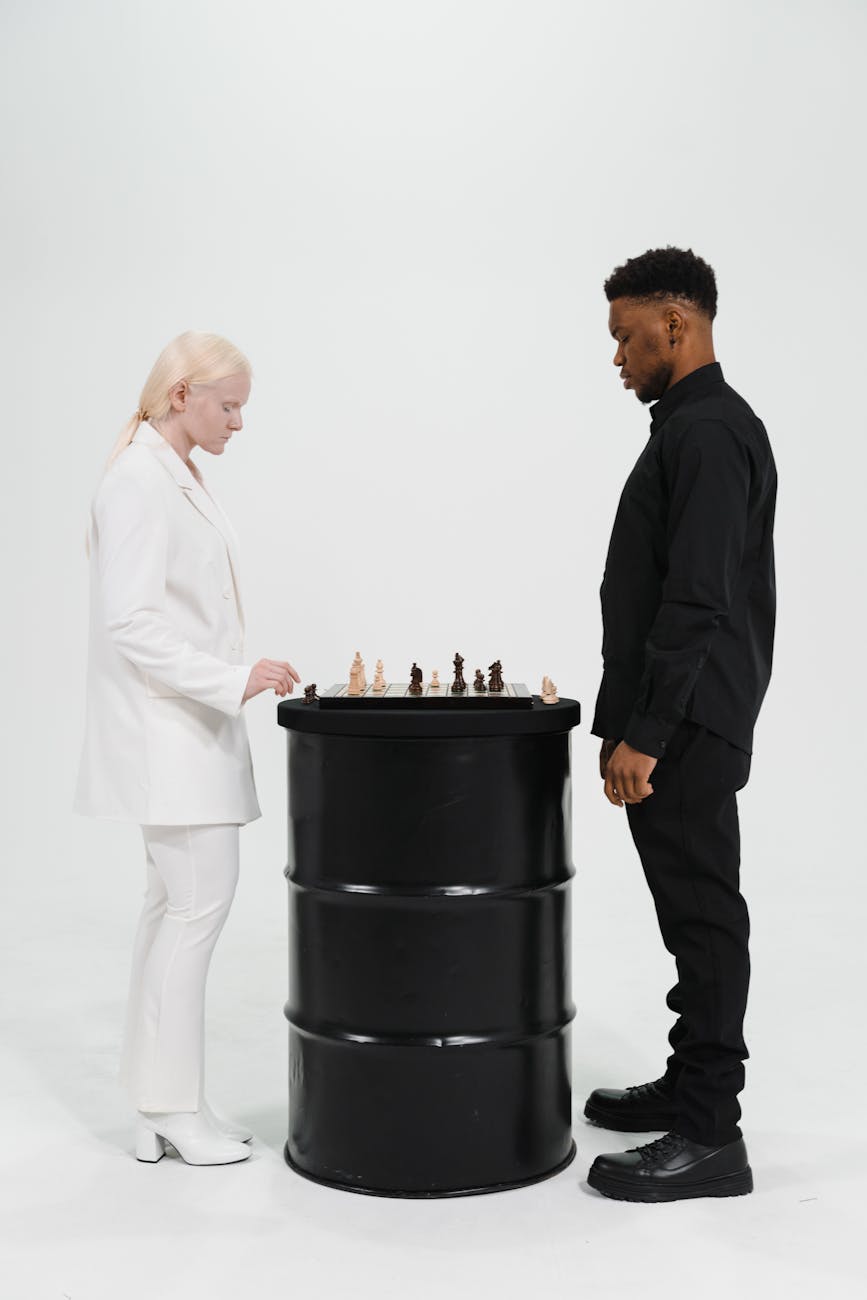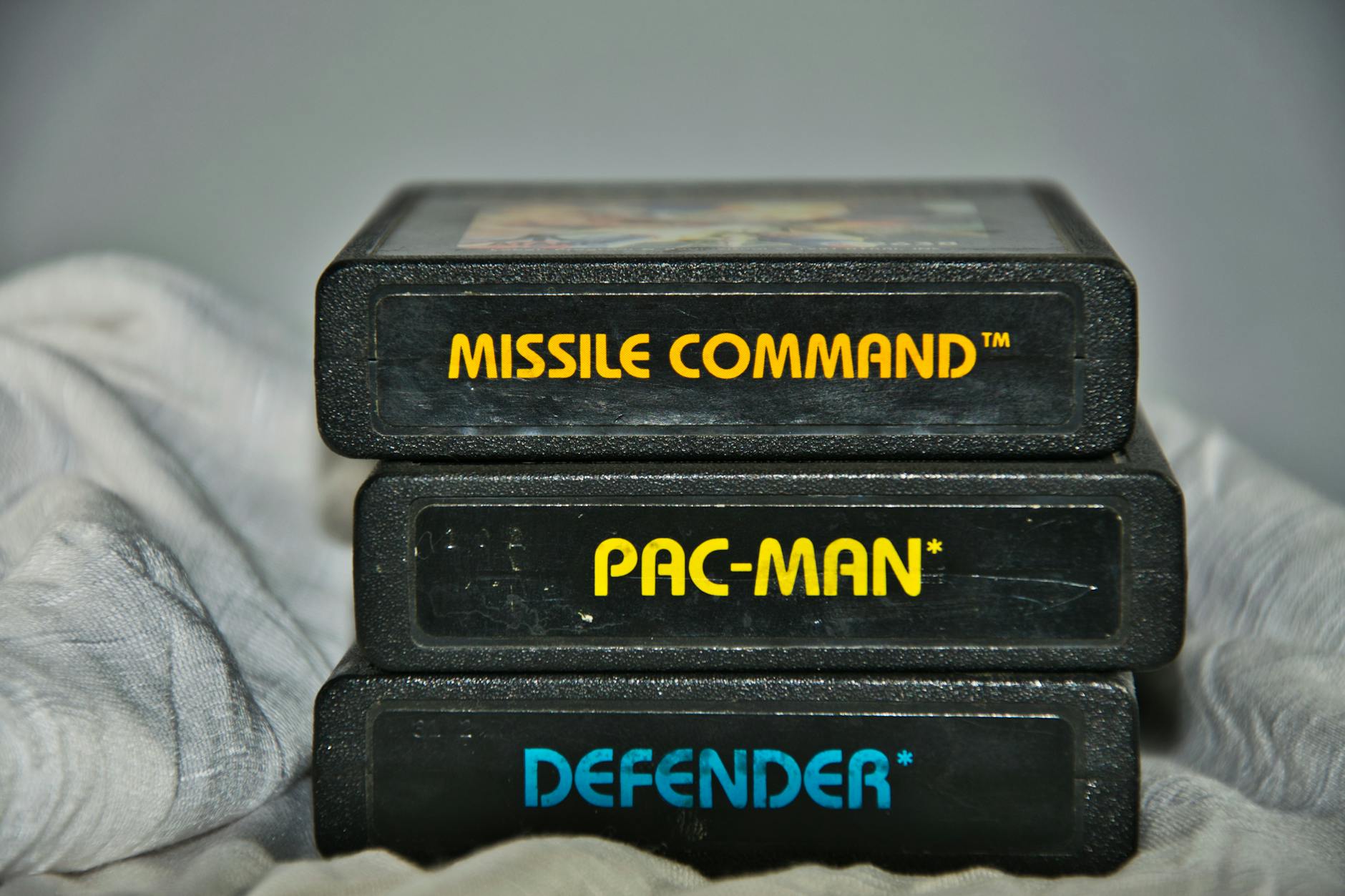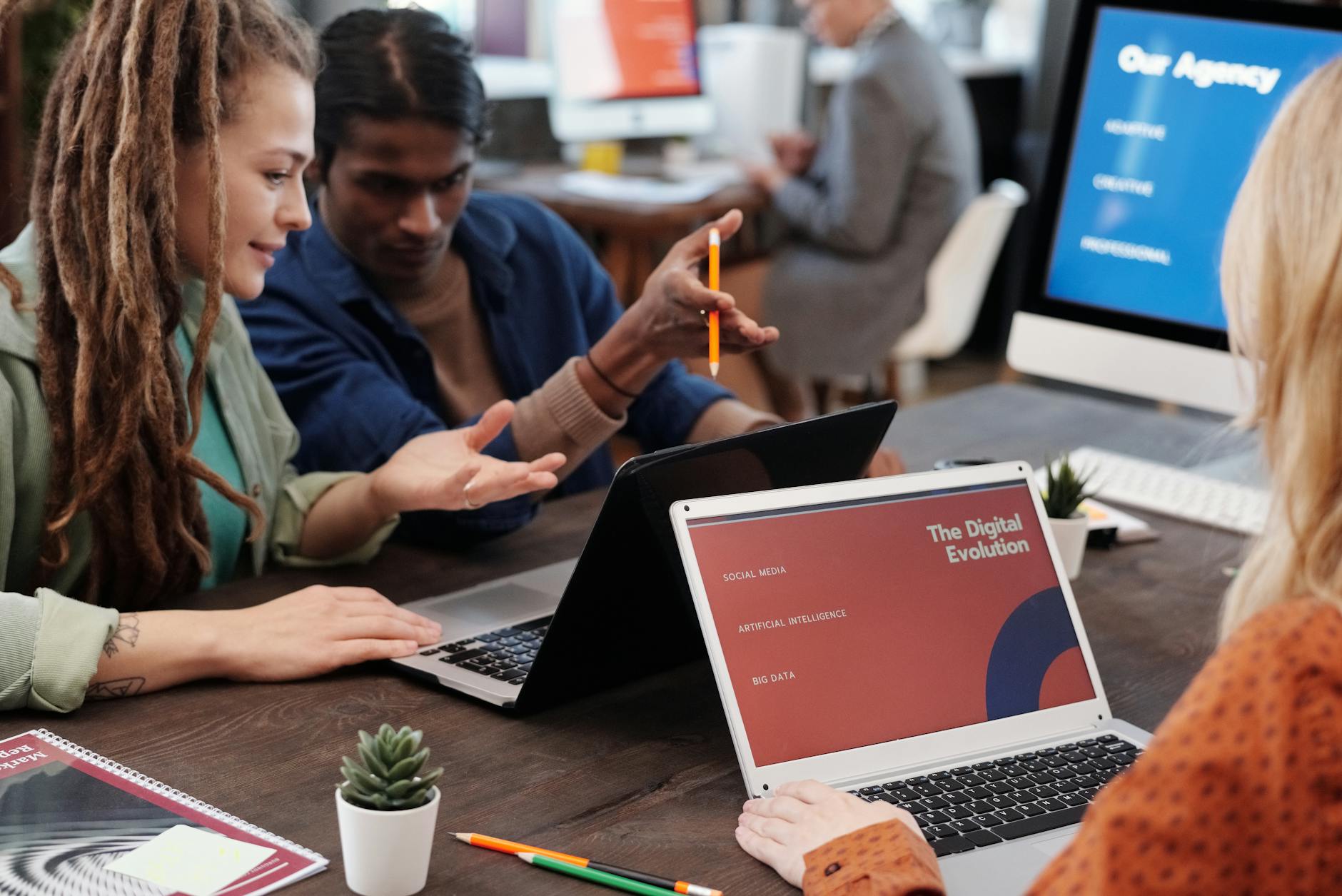Unlocking Potential: Harnessing Cognitive Biases for Better Decisions
Understanding Cognitive Biases
Impact on Business Decisions
Cognitive hiccups, or biases as the science folks call them, seriously mess with decision-making, especially in business. They’re like those pranksters at meetings who steer discussions off course. When misdirected by bias, company bigwigs might make cringe-worthy decisions that end up haunting the balance sheet. These biased blunders often stem from missing pieces of info or misreading what we do have (Investopedia).
Take the fundamental attribution error, for instance. This little rascal warps leader perception, making them overvalue a team member’s personality over the real-world context they’re dealing with. This often leads to changes that do more harm than good within the org (Australian Institute of Business).
Then you have recency bias, which convinces decision-makers that the last couple of shiny data points are all that matter, even when long-term stats say otherwise (Australian Institute of Business).
Flaunt these biases in the biz realm, and here’s what might happen:
| Cognitive Bias | Business Decision Flubs |
|---|---|
| Fundamental Attribution Error | Wrongly blaming poor performance on personality quirks |
| Recency Bias | Losing sight of the big picture, focusing too much on the latest blips |
| Confirmation Bias | Ignoring any evidence that doesn’t fit with what we’ve already decided |
| Availability Bias | Trusting whatever’s top of mind, missing out on the deeper insights |
Wise up to these mind games to boost your data-driven decision making.
Influence on Decision Making
Biases don’t just toy with outcomes; they mold the whole thought process. Research illuminates how biases sneak into tough situations like climate challenges or stopping those pesky pandemics (NCBI).
Why do these matter to us? Well, when these sneaky biases crash our mental party, they stop us from picking the best paths, making it tough to steer the company ship. Top brass execs, the captain figures, need to dodge these pitfalls to hit strategic marks. Drawing on solid decision-making models in business can help shimmy around those biases.
Here’s a gallery of biases that often gatecrash professional decision-making:
- Conservatism Bias: Clinging to comfy old beliefs can put the kibosh on new ideas.
- Confirmation Bias: Cherry-picking the evidence only we like ensures our decisions are anything but broad-minded.
- Hindsight Bias: Acting like we always saw it coming throws off future plans.
- Availability Bias: Overlooking the stuff beneath the surface in favor of what’s easy to grab can lead decisions astray.
These mental shortcuts impact professional space and everyday life, coloring our choices and social calls. Spotting and squashing these biases amps up decision support systems, boosting business bang for the buck. For more insights, check out our chunk on factors affecting decision making.
Master the art of spotting these cognitive traps, and you’ll unlock smoother business sailing and long-term growth.
Common Cognitive Biases
When we make choices, our brain sometimes plays tricks on us, creating patterns called cognitive biases. Let’s chat about four that mess with our heads, especially for those folks making big calls at the top: conservatism bias, confirmation bias, hindsight bias, and availability bias. Each one of those sneaky brain quirks can really mess with clear thinking and sensible decisions.
Conservatism Bias
Ever find yourself sticking to old info instead of updating your brain closet with fresh facts? That’s conservatism bias for you. It makes us cling to the old and ignore the new, kind of like wearing last season’s clothes because they’re comfy (Investopedia). In fast-paced businesses, this picky memory can slow you down big time when you need to pivot quick.
| Scenario | Impact |
|---|---|
| Launching a new product | Slow to react to customer reviews |
| Adjusting business strategy | Missing out on the latest market vibes |
Feeling this bias creeping in? Check out our insights on factors affecting decision making to straighten things up.
Confirmation Bias
This one’s like having a favorite song you play on repeat, meanwhile ignoring the new tunes popping up. Confirmation bias happens when we hunt for stuff that backs up what we already believe, dodging anything that doesn’t fit the bill (Investopedia). Such tunnel vision can make us miss out on amazing opportunities.
| Scenario | Impact |
|---|---|
| Evaluating new technology | Sticking to familiar tech, ignoring the future tech rockstars |
| Hiring decisions | Skipping over people who could shake up the status quo |
Break free from the circle! Consider using decision support systems in business to bust this bias.
Hindsight Bias
Ah, the ol’ “I knew it all along” trick our mind plays. Hindsight bias is when things look super obvious only after they’ve unfolded. Perfect for the know-it-alls but not so much for practical future planning.
| Scenario | Impact |
|---|---|
| Financial forecasting | Acting like you saw the market twist coming |
| Legal decisions | Thinking a case was crystal clear from day one |
Dive into decision making models in business to avoid feeling too smart for your own good.
Availability Bias
Our minds love to play favorites, too. Availability bias is when recent events hijack your thoughts, making them seem more likely to happen again because they’re fresh in your mind (Investopedia). It usually means over-prepping for that one rainstorm while ignoring the sunshine forecast.
| Scenario | Impact |
|---|---|
| Risk management | Overprioritizing recent hiccups |
| Strategic planning | Misjudging the importance of certain threats |
Want to fight back against these tricky brain antics? Knowing how biases make waves lets us rethink our steps. Strategy folks can dive into data-driven decision making to keep things real.
By calling out these cognitive biases, we arm ourselves with sharper tools to slice through the noise and make smart, balanced decisions in our work.
Cognitive Biases in Professions
Cognitive biases aren’t just sneaky little gremlins in our heads; they impact real-world decisions in big fields like finance, medicine, and law. If we sniff them out, we can make smarter choices and get results that make more sense.
Impact in Finance
In finance, cognitive biases can be like mischievous ghosts messing with investors’ heads. One biggie is the disposition effect. It makes investors dump winning stocks way too soon and cling desperately to losers.
Check out how often this happens:
| Investor Move | How Often It Happens (%) |
|---|---|
| Selling Winners | 55 |
| Holding Losers | 45 |
This can leave investors with a shaky, not-so-great portfolio. Financial experts need to keep their wits about them to dodge these biases. Overconfidence is another sneaky culprit, where people think they’ve got insider info when they really don’t, leading them to take dicey risks without solid reasons.
Spotting these biases is like finding a treasure map for better financial decisions. Tools like decision support systems in business can help by providing solid data to fight these pesky biases and encourage smart investment strategies.
Influence in Medicine and Law
Medicine
In medicine, cognitive biases can steer us off-course with diagnoses and patient care. The availability bias makes doctors think of flashy, memorable cases instead of cold, hard facts (NCBI). It’s a recipe for wrong diagnoses and treatments.
To combat this, we need to rely on evidence-backed practices and robust diagnostic tools. Continued education and training for medical pros can also keep them from taking mental shortcuts.
Law
In the legal world, biases like the anchoring effect can sway courtroom decisions. Judges and jurors might hang onto specific numbers, influencing their verdicts (PubMed Central). For instance, setting initial numerical references can unduly affect final decisions on punitive damages.
Here’s how the anchoring effect plays out in the courtroom:
| Legal Scenario | Anchoring Effect on Decisions (%) |
|---|---|
| Sentencing | 65 |
| Punitive Damages | 50 |
| Jury Verdicts | 45 |
By understanding and countering these biases, legal pros can aim for fairer judgments. Using frameworks and lists can help them challenge their gut reactions and minimize bias effects.
Knowing about cognitive biases in our careers helps us aim for fairer, more thoughtful decisions. Spotting these sneaky thoughts, alongside strategies like decision making models in business, can cut down on bias, resulting in better choices in all sorts of professions.
Overcoming Cognitive Biases
Why It Matters to Be Clued In
Let’s face it, our bustling work life can sometimes muddle our brains. Those sneaky cognitive gremlins—better known as cognitive biases—often steer our decisions into murky waters. Getting hip to these biases isn’t just wise; it’s a game-changer. Catching them in the act is the first leap towards making sharper choices. As Verywell Mind points out, we’re all wired this way. Knowing how these biases skew our thoughts is downright freeing.
Here’s a cheat sheet on a few brain quirks and how they mess with choices:
| Cognitive Brain Quirk | How It Jerks Your Chain |
|---|---|
| Confirmation Gremlin | Makes you only see what you wanna see |
| Overconfidence Ogre | Inflates your ‘I’m awesome’ meter (PubMed Central) |
| Availability Monster | Makes the loudest thing you recall seem super important |
| Conservatism Goblin | Hinders you from shaking off old ideas with new proof |
Figuring these out can steer us towards decisions that are less fuzzy, and more about the nitty-gritty data. Wannna dig deeper? Pop over to our factors affecting decision making.
Tricks to Keep Biases at Bay
Once you’re wise to the psychological tricksters, it’s time to outsmart them. Here are some ways to keep those biases from running the show:
1. Brain Workouts:
Playing mind games ain’t just for fun. These brain teasers sharpen your skills to spot and fight biases. Verywell Mind tells us they do wonders for thinking straight and making good calls.
2. Numbers Rule:
Numbers don’t lie, folks. Leaning on data and crunching numbers ensure we make decisions based on hard facts, not hunches. Curious about this approach? Check out decision support systems in business for more.
3. Mix It Up:
Bringing in peeps with different backgrounds stirs the pot and cuts down the bias. Different heads mean different angles, leading to a choice buffet instead of same-old, same-old.
| Trick | How It Works |
|---|---|
| Brain Workouts | Sharpens wits to catch biases |
| By the Numbers | Follows the data, not gut feelings |
| Mix It Up | Uses mixed voices for better decisions |
4. Constant Nagging (aka Awareness Campaigns):
Keeping the team on their toes with workshops and such isn’t just nagging—it’s needed. A “bias alert” mindset keeps everyone honest.
5. Planning It Out:
Following a set plan like the SEEDS Model® can line up our ducks and keep biases on a short leash. Check out our notes on decision-making models in business for the full rundown.
Using these tricks rewires our brains for bias-busting decisions. Staying savvy about cognitive biases means our choices ain’t just smart—they’ll hold up down the road. For even more tips and tricks, wander over to our resources on data-driven decision making.
SEEDS Model® for Decision Making
The SEEDS Model® is like our secret weapon against those sneaky little gremlins called cognitive biases that mess with our brain’s decision-making powers. We’re talking about a handy system to help us cut through over 150 biases larking around in our noggins and get down to clear, smart decision-making.
Framework Overview
The SEEDS Model® – made up of Similarity, Expedience, Experience, Distance, and Safety – is cooking up the perfect recipe for business brains to kick bias to the curb. Charged up by the NeuroLeadership Institute, it’s a neat way to spot and squish biases, helping us grab smarter strategies for everything from leading a meeting to popping tech choices.
- Similarity Bias: We tend to give high-fives to folks or ideas that mirror our own vibes.
- Expedience Bias: We love a quick decision, but sometimes fast ain’t fabulous — digging into full info is a better plan.
- Experience Bias: We’ve got a soft spot for the old “I’ve seen it all before,” but new insights can be game-changers.
- Distance Bias: Stuff that’s closer in time or space gets the thumbs-up even if it’s not the best option.
- Safety Bias: Playing it safe feels cozy, but sometimes it’s worth risking it for the biscuit.
Domains and Biases
Each funky domain in the SEEDS Model® has its collection of biases trying to sneak into our decisions. Get to know these domains, and you’ll get a handle on how they mess with our judgment across all sorts of situations.
| Domain | Key Biases | Description |
|---|---|---|
| Similarity Bias | In-group favoritism, Fundamental Attribution Error | Backing those we get along with, spotlighting personal traits over the context (AIB). |
| Expedience Bias | Anchoring, Recency Bias | Sticking to the first scrap of info that sticks or the latest thing we heard (AIB). |
| Experience Bias | Confirmation Bias, Hindsight Bias | Letting yesteryear’s experiences overshadow fresh ideas (NCBI). |
| Distance Bias | Availability Bias, Social Distance Bias | Favoring what’s easy to remember or nearby (NeuroLeadership Institute). |
| Safety Bias | Loss Aversion, Status Quo Bias | Ducking risks and losses, which often leads to sticking with the same ol’ choice (NeuroLeadership Institute). |
To shake off these biases for good, we gotta be super aware and mix in strategies in our decision game. Doing this bump-ups our decision quality, leading to awesome biz results. For some deep-diving action on curbing these biases, check out our lowdown on decision making models in business. And hey, using decision support tools in business can also help keep our decisions in the bias-free zone.
Cognitive Biases in Sustainability
Influence on Environmental Decisions
When we dive into the world of sustainable business practices, we bump into our brain’s little quirks—also known as cognitive biases—that can throw a wrench in making environmental decisions. According to brainy folks at NCBI, these biases are like the shortcuts our brains take to make snap judgments. But when faced with big-deal stuff like climate change, they might lead us down the wrong path.
- Underestimating Long-term Dangers: We’re all about the now, right? So when it comes to looming threats like global warming, we’re kind of slackers. It’s that whole “I’ll do it tomorrow” mentality, also known as hyperbolic discounting. Paying more attention to immediate gratification means the planet’s future might not look so rosy.
- Oversimplification and Poor Predictions: Let’s face it—our brains like simple stuff. So when dealing with the crazy complex world of environmental challenges, we often just make wild guesses. The problem is, these guesses don’t always hit the mark and can lead to tough consequences down the road.
- Personal vs. Collective Interests: Let’s be real. We look out for number one. That’s how we end up with situations like the “Tragedy of the Commons,” where we treat shared resources like they’re going outta style for personal gain. Facing sustainability head-on means we gotta rethink this “me first” mindset.
- Social Conformity and Herd Behavior: Ever find yourself just going along with the crowd? Yeah, us too. Group pressure’s a thing, and it can lead to doing what everyone else is doing, even if it goes against what we know is right. It’s like the social media of real-life decisions.
Addressing Biases for Sustainable Solutions
So, how do we outsmart our brain’s quirks to do right by the planet? Here’s what we can try:
- Increased Awareness and Education: Time to put on our thinking caps—let’s get to know these biases better. Teach ourselves (and the team) about them, because understanding is halfway to victory.
- Data-Driven Decision Making: Use cold, hard data to make decisions. Think of it as having a GPS for environmental choices, steering us away from our gut’s sometimes questionable instincts.
- Decision Support Systems: Think of these systems as your eco-friendly advisors. They crunch numbers and spit out predictions, helping us vote on Mother Nature’s behalf.
- Encouraging Collective Interests: We need a culture shake-up—one that cherishes team spirit and community over individual wins. That way, personal incentives don’t sabotage the bigger picture.
- Challenging Groupthink: Let’s make room for all ideas. By valuing different opinions, we dodge the pitfalls of going with the flow and drive better, smarter decisions.
When we wise up to these mental hiccups, we’re on the road to tackling environmental issues with gusto. Curious for more on decision-making? Check out our stash of articles on topics like decision making models in business and factors affecting decision making. Let’s start making those smart, sustainable choices happen!













